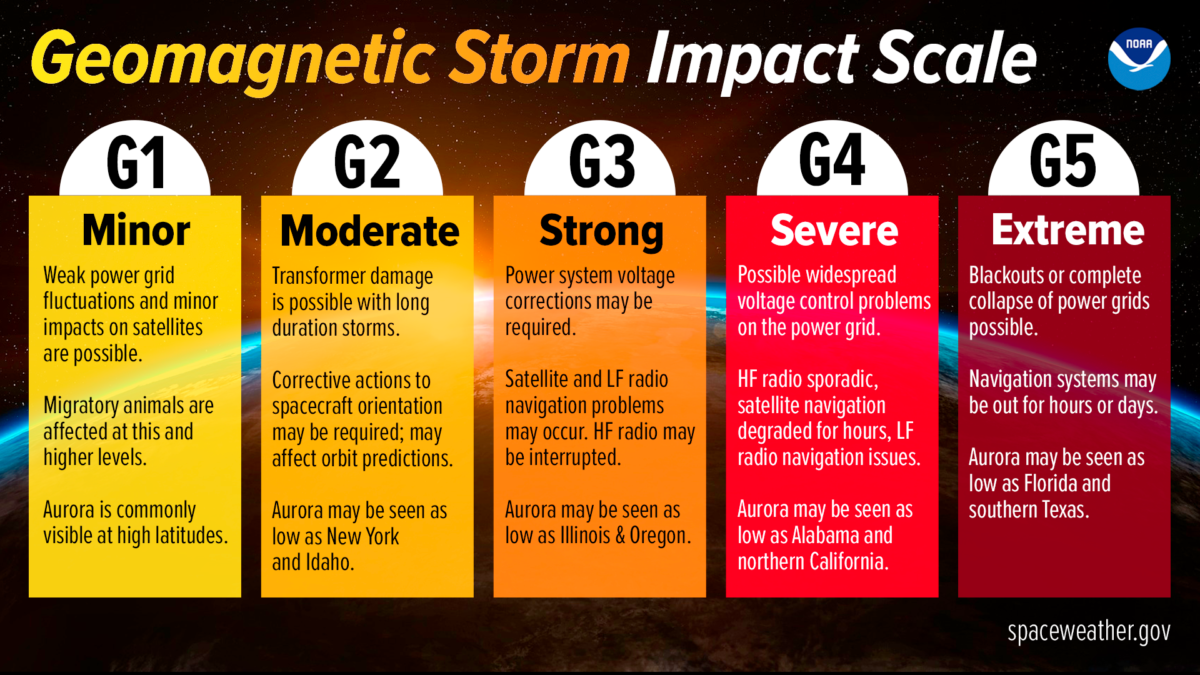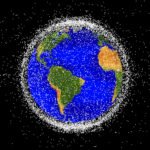For the first time in two decades, stargazers across the southern United States have been dazzled by colorful, undulating waves of light in the night sky. These so-called Northern Lights are vibrant displays of the interaction between electrons and ions emitted by the Sun and the Earth’s upper atmosphere. While this interaction usually occurs closer to the poles where Earth’s magnetic field is the strongest, intense bouts of weather on the Sun’s surface have the power to distort the magnetic field, causing showers of particles at unusually low latitudes like we’ve seen in Georgia recently.

This type of extreme event in the outer space environment, also called a geomagnetic storm, can have impacts beyond colorful skies. Because of increased levels of electromagnetic radiation, these storms can disrupt Earth-based technology like navigation, power, and communication systems. The National Oceanic and Atmospheric Administration (NOAA), the same government entity that monitors other types of severe storms, uses a 1-5 categorical system similar to hurricane categories and tornado damage scales to evaluate the strength of a given storm. “G3” events are linked to relatively minor impacts like short-term satellite TV dropouts or GPS glitches, while “G5” storms can cause more severe issues like widespread airplane navigation system failure.

Similar to Earth weather forecasting, when conditions conducive to storm formation are observed, scientists use physics-based models to predict the potential severity and issue a watch, warning, or alert to the public. These forecasts rely on a combination of ground-based and satellite optical tools to monitor related processes on the Sun’s surface. Scientists also track the Sun’s 11-year solar cycle of activity; NOAA recently reported the Sun has moved into the peak phase of this cycle, corresponding to the highest number of geomagnetic storm events.
Theoretically, this careful tracking allows public and private sectors to anticipate potential technological impacts from extreme geomagnetic activity (and more interesting night skies). However, while accurate Earth weather forecasts can be distributed days in advance, highly accurate geomagnetic storm forecasts are significantly less reliable, sometimes available only hours before major events.
Part of this limitation results from differences in the Earth and space weather environments. Magnetic activity is difficult to detect from afar, while the glare of the Sun’s surface impedes observations. Modeling technology is also underdeveloped—while Earth weather has decades of datasets to inform accurate, physics-based prediction models, scientists are still working to build our base of knowledge about the Sun and its weather patterns. This makes predicting the actual timing and intensity of an isolated geomagnetic storm difficult until it is closer to Earth, giving ground and space-based systems less time to prepare for high levels of radiation.
Some academics worry that strong geomagnetic storms could wreck entire power grids with little warning, plunging cities into long-term darkness. These concerns draw in part from the 1859 Carrington Event, the strongest geomagnetic storm in recorded history, which caused a global telegraph system shut down. However, the majority of NOAA scientists consider the likelihood of geomagnetic storm impacts to the general public, beyond temporary disturbances, relatively low. In May, the first G5 storm in 2003 caused only small-scale disruptions, including to many tractor GPS systems.
Still, these concerns propel scientists and other parties towards advancements in our understanding of the Sun and space weather, especially as we become increasingly technology-dependent. Developments like the Parker Solar Probe and more complex physical models aim to advance our understanding of the Sun’s behavior and improve prediction capabilities.

As 2025 approaches, geomagnetic activity is expected to continue to increase. We still have work to do to develop accurate forecasts and better safeguard global systems. In the meantime, we can still enjoy the light show.
About the Author
Sahana is an undergraduate at the University of Georgia studying Astrophysics with a Sustainability certificate. When she's not pretending to do her homework, she can be found playing ultimate frisbee or adventuring around Athens. Connect with her at sahana@uga.edu.
- Sahana Parkerhttps://athensscienceobserver.com/author/sahana-parker/February 14, 2024
- Sahana Parkerhttps://athensscienceobserver.com/author/sahana-parker/November 11, 2022
- Sahana Parkerhttps://athensscienceobserver.com/author/sahana-parker/April 15, 2022
- Sahana Parkerhttps://athensscienceobserver.com/author/sahana-parker/December 29, 2020








